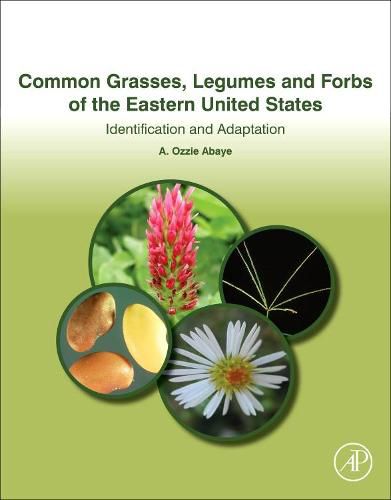Readings Newsletter
Become a Readings Member to make your shopping experience even easier.
Sign in or sign up for free!
You’re not far away from qualifying for FREE standard shipping within Australia
You’ve qualified for FREE standard shipping within Australia
The cart is loading…






Common Grasses, Legumes and Forbs of the Eastern United States: Identification and Adaptation presents photographic identification of the most important grassland, turf, and noncrop plants, and their seeds to facilitate quick identification in the field. Unlike many publications that focus solely on floral identification, this book emphasizes vegetative identification as well to allow for accurate plant identification year-round. The book includes 23 forage legumes, 61 grasses, and more than 100 nonleguminous forbs found in pastures and grasslands of Eastern United States.
In addition to identification of important species, the book describes other key characteristics such as adaptation, favorable and unfavorable soil types, seasonal growth patterns, and toxicity. For plants harvested for hay or silage or by grazing, the book also discusses cutting and grazing management, quality factors, and potential yields. Through its practical approach and comprehensive structure, Common Grasses, Legumes and Forbs of the Eastern United States is a valuable reference for farm advisors, teachers and students of agronomy, and for anyone interested in the dynamic relationship between plants and agriculture.
$9.00 standard shipping within Australia
FREE standard shipping within Australia for orders over $100.00
Express & International shipping calculated at checkout
Common Grasses, Legumes and Forbs of the Eastern United States: Identification and Adaptation presents photographic identification of the most important grassland, turf, and noncrop plants, and their seeds to facilitate quick identification in the field. Unlike many publications that focus solely on floral identification, this book emphasizes vegetative identification as well to allow for accurate plant identification year-round. The book includes 23 forage legumes, 61 grasses, and more than 100 nonleguminous forbs found in pastures and grasslands of Eastern United States.
In addition to identification of important species, the book describes other key characteristics such as adaptation, favorable and unfavorable soil types, seasonal growth patterns, and toxicity. For plants harvested for hay or silage or by grazing, the book also discusses cutting and grazing management, quality factors, and potential yields. Through its practical approach and comprehensive structure, Common Grasses, Legumes and Forbs of the Eastern United States is a valuable reference for farm advisors, teachers and students of agronomy, and for anyone interested in the dynamic relationship between plants and agriculture.